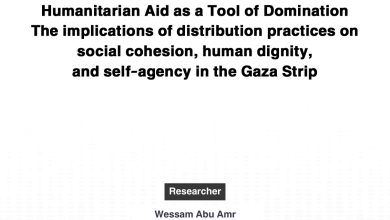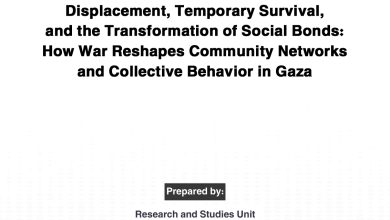Policy Paper: Palestinian Women: Between War Resilience and Their Role in Post-Conflict Reconstruction in Gaza.

Women constitute 49% of the total population, according to the Palestinian Central Bureau of Statistics (PCBS) reports, but their contribution to public life remains far below their numbers in society. According to the Palestinian Central Bureau of Statistics (PCBS) reports, women in the labor market will account for 19% in 2023. In decision-making centers, women’s participation remains low and one of the lowest rates in the region, despite being one of the most important indicators of gender equality, as data for 2021 showed that the percentage of women members of the Central Council constitutes about 23%, 19% of the members of the National Council, and 12% of the members of the Council of Ministers. There is also one-woman governor out of 15 governors, and 1% of the heads of local authorities in Palestine are women. As for the management of the councils of chambers of commerce, industry and agriculture, only 1% are women, about 19% of judges are women, and 18% of prosecutors are women. These figures reflect a marked exclusion of women from public life, which negatively affects their status, deepens gender inequality gaps, and at the same time prevents society from benefiting from women’s abilities and contribution to public life. This will inevitably affect the development of society and reinforce internal conflicts, especially gender conflicts. The exclusion of women in Palestine is a social tendency to exclude them from important public positions in the economy and politics, preventing them from expressing their opinions and limiting their public visibility. Despite the vital role that women play in crises, such as their steadfastness during the recent war on the Gaza Strip, in which various types of munitions were used including internationally banned ones, and came after years of siege imposed on Palestinian men and women, which deepened their suffering, but the general trend was to exclude women.

Download the paper: click here




